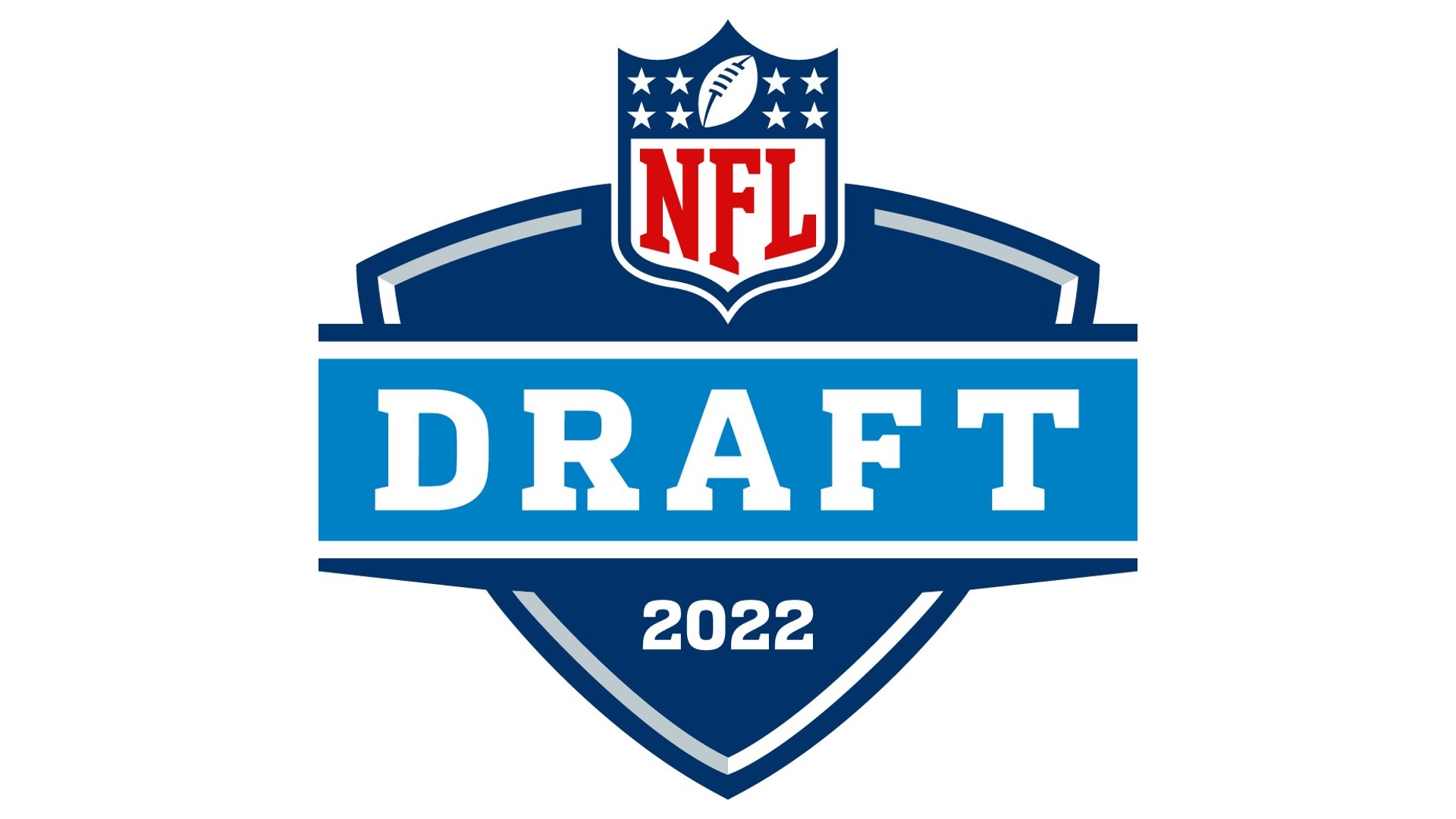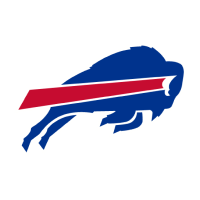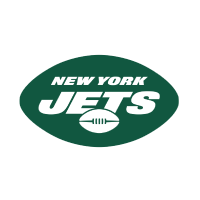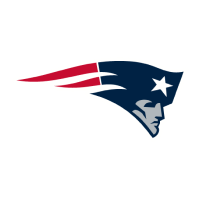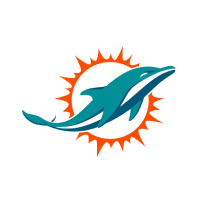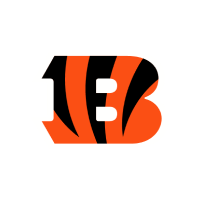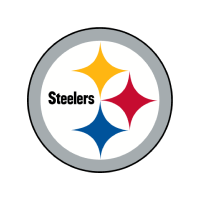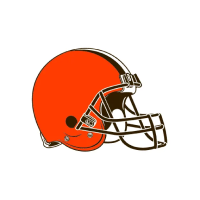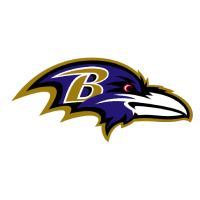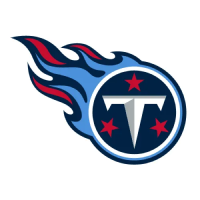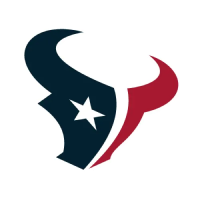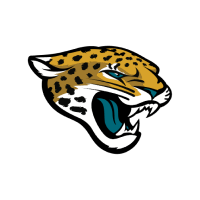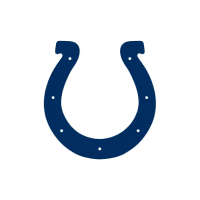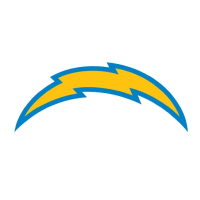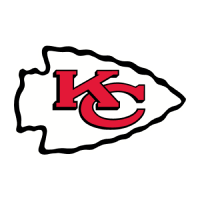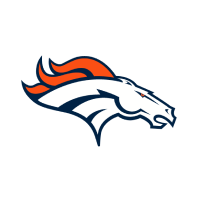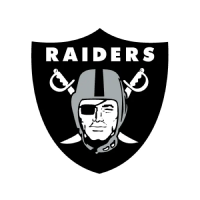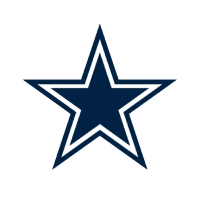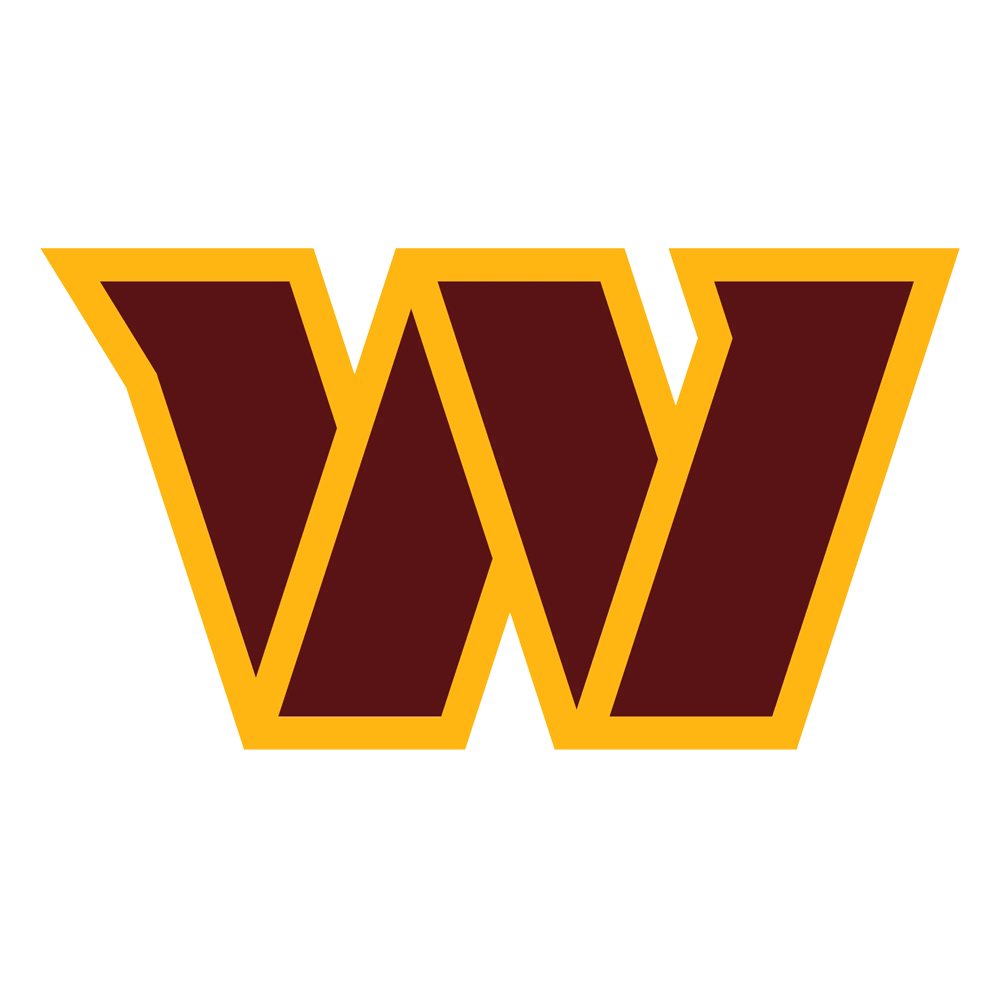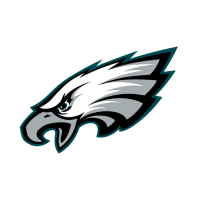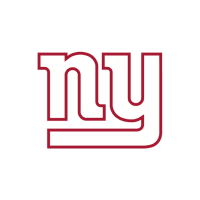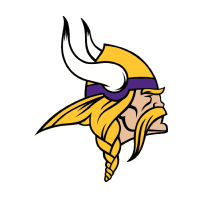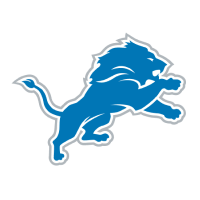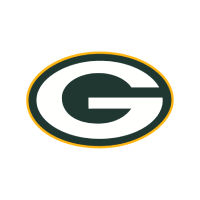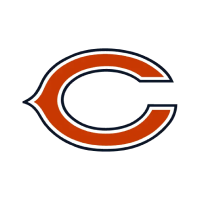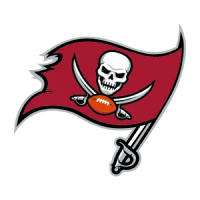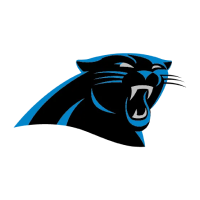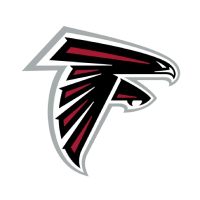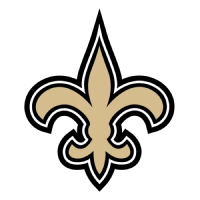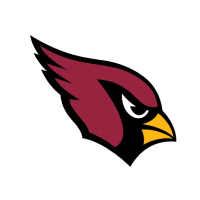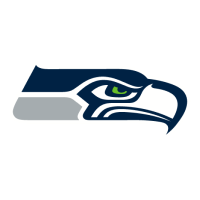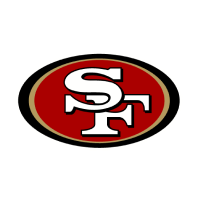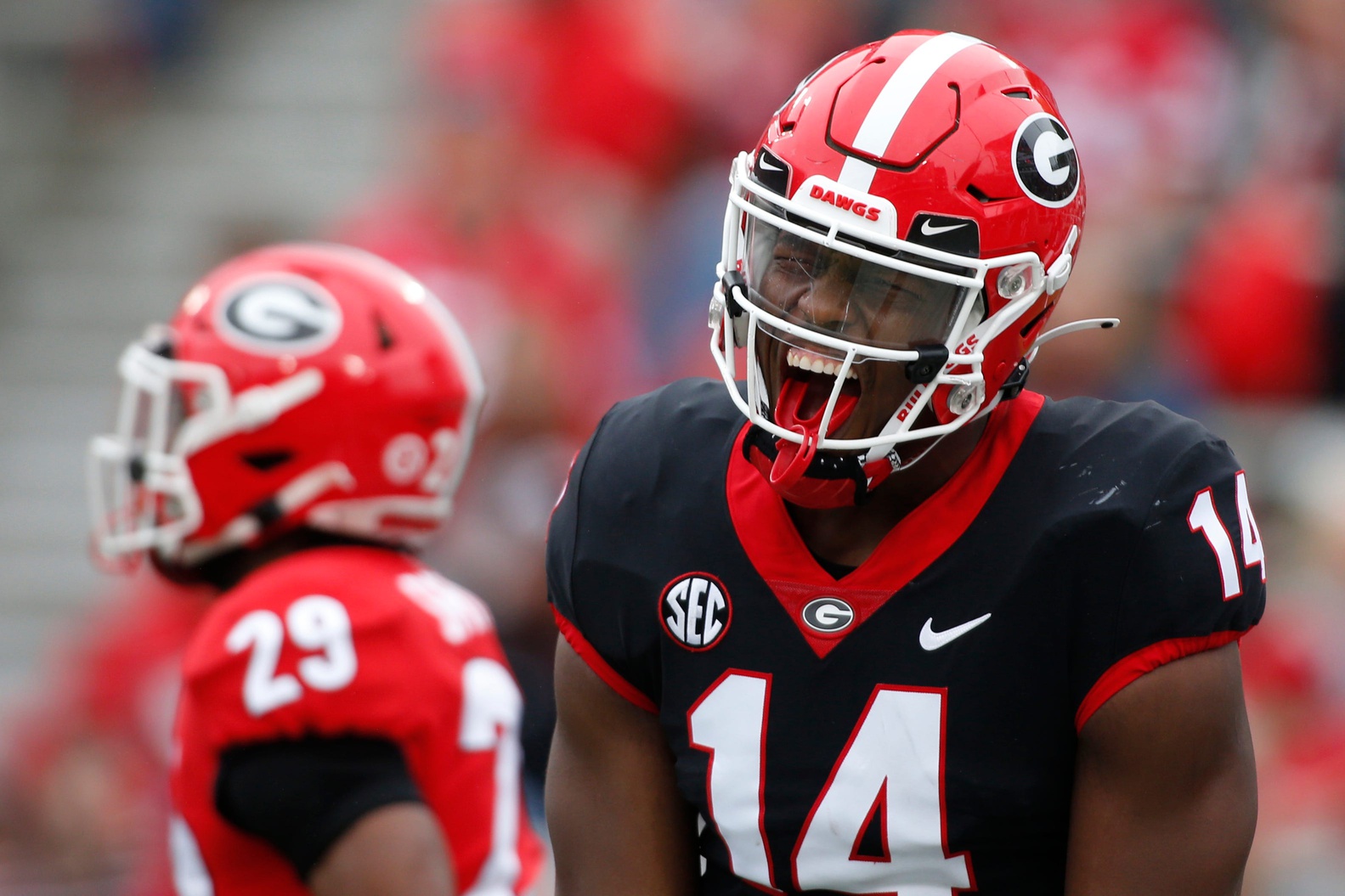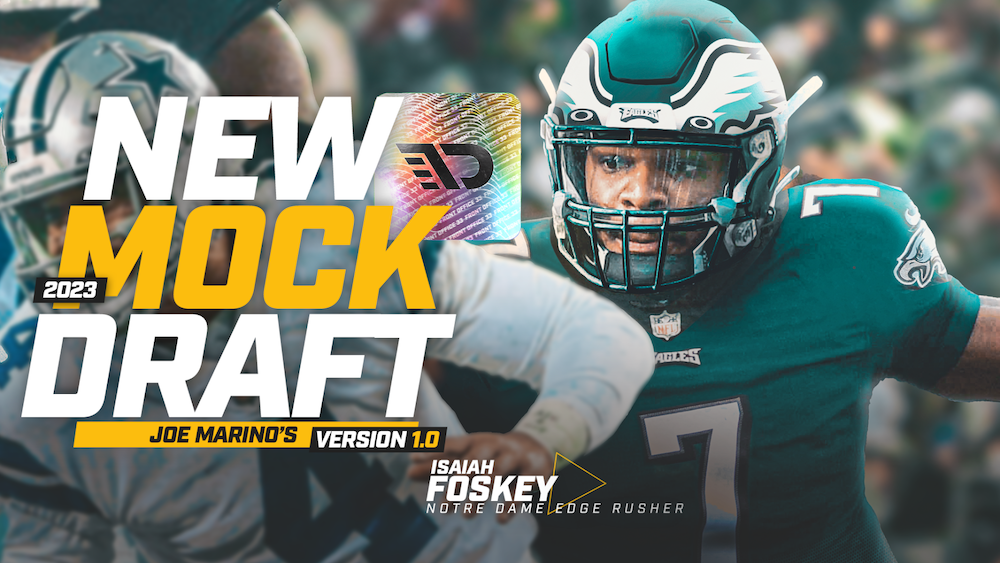BUFFALO BILLS POST-DRAFT BREAKDOWN
The Bills were positioned well to attack the 2021 draft without a glaring need to fill. Prior to the draft, general manager Brandon Beane assembled a deep, talented, and balanced roster which enabled him to let the board fall to him. Because of that, the Bills were able to focus on investing their draft capital on intriguing developmental options with elite physical traits at premium positions and that’s exactly what Buffalo accomplished.
It can be argued that the Bills could have been more aggressive to attack the Super Bowl window that is clearly open in 2021, but Beane prefers to keep that window open for as long as possible with the infusion of talented but raw prospects he added in the Draft. Unless it’s a quarterback, NFL teams are rarely ever “one player away” and it’s even less often a rookie. While there may not be many contributions in 2021 from this haul, that was the perception of many after Buffalo’s 2020 draft and it turned out to be anything but the truth.
Let’s take a look back at the Bills’ 2021 NFL Draft class:
Round 1: Gregory Rousseau, DE, Miami
Following the 2019 season where Rousseau collected 19.5 tackles for loss and an ACC-leading 15.5 sacks in the first action of his football career on the defensive line, Rousseau was trending toward becoming a high first-round selection—especially when considering his impressive stature and length. Rousseau lost some of his sizzle after opting out of the 2020 season and leaving questions in the minds of evaluators given his newness to the position and some of the rawness that his 2019 game tape revealed despite the elite production.
For Buffalo, who entered the draft with a complete and balanced roster, taking a swing on a talent like Rousseau at the bottom of the first round is a worthwhile risk. The primary snap-takers at defensive end in 2020 were Jerry Hughes and Mario Addison, both creeping toward their mid-30s and in the final year of their respective deals. Also taking into account that the Bills invested a second-round pick last year in AJ Epenesa, who showed more and more promise as the 2020 season went along, the Bills can be patient with Rousseau and allow him to develop while using him in favorable situations where he can be productive as a rookie.
The Bills are unlikely to be picking high enough in the draft anytime soon to land an elite talent like Chase Young, Myles Garrett, or Joey Bosa and won’t have the available cap space in future years to sign a high-profile pass rusher in free agency, so this was the most logical place for Buffalo to find an impact pass rusher—something that is currently missing from the Bills’ defense.
Round 2: Carlos Basham Jr., DE, Wake Forest
Beane doubled down at the defensive end position by making Basham Jr. his second pick of the draft. Basham was a productive defender for Wake Forest who collected 33.5 tackles for loss, 19.5 sacks, seven forced fumbles, and a defensive touchdown across his final 31 games in college. Basham Jr. is a player that stylistically and athletically compares very favorably to former Bills defensive end Shaq Lawson, who Buffalo lost in free agency after the 2019 season.
In Basham Jr., the Bills are getting back everything they lost from the departure of Lawson. Basham Jr. is a physical run defender that excels at squeezing gaps, maintaining outside leverage, and containing perimeter rush attempts. As a pass rusher, Basham Jr. is a power rusher that excels when attacking interior gaps with his quickness, power, technique, and angles. I can clearly imagine Basham Jr. claiming and filling a role exactly like the one Lawson did under McDermott in 2018 and 2019.
The Bills prioritize the defensive end position and between Rousseau, Epenesa, and Basham Jr., Buffalo has secured plenty of talented young options at a low cost to keep the cupboard full of options.
Round 3: Spencer Brown, OT, Northern Iowa
The Bills’ starting offensive line is set—for now. The challenge with the makeup of the Bills’ current offensive line group is that entering the draft, there were no offensive linemen other than the five starters that were under contract beyond this season. Buffalo was lacking young, developmental options to provide depth and potentially groom into starters. That changed with the selection of Brown, who brings a rare blend of size, length, and athleticism to the table.
While Brown’s physical gifts are elite, he’s very raw and new to playing offensive line. In high school where he played eight-man football, Brown played tight end and defensive end. He converted to the offensive line in 2017 where he started only five games before suffering a season-ending knee injury. Brown was the starting right tackle for Northern Iowa in 2018 and 2019 before opting out of the 2020 season.
The biggest question mark for Brown is that he is inexperienced and unchallenged, having made a total of 32 starts at the FCS level. He’s only played games at offensive line in three seasons of his football career. With that said, he did fare well at the 2021 Senior Bowl and has been training with former NFL offensive linemen Joe Staley for the last seven months to prepare himself for life in the league. The Bills’ offensive line depth took a hit this offseason with the loss of swing tackle Ty Nsekhe, and Brown figures to be the leading candidate to take that role in 2021.
Round 5: Tommy Doyle, OT, Miami (OH)
Ever since the 2018 season where Beane failed to adequately assemble a starting offensive line much less depth for Josh Allen in his rookie season, Beane has been deliberate about never letting that happen again. Beane has stockpiled veterans and invested draft capital in blockers to make sure he never lets his quarterback down again, something he has commented on frequently since the 2018 season. Just like at defensive end, Buffalo doubled down at the offensive tackle position with back-to-back selections in Brown and Doyle.
Like Brown, Doyle has a long and sturdy frame with terrific arm length and an impressive athletic profile, especially for his size. While he’s not quite the caliber of athlete that Brown is, Doyle does come with experience playing both left and right tackle where his 30 career starts saw him play 16 on the left side and 14 on the right side. Doyle is a coordinated pass blocker that is aggressive in the run game. With that said, he does need development with his hand technique, play with better bend, and be more consistent with staying square in pass protection. Doyle has a chance to develop into even more quality depth for the Bills up front.
Round 6: Marquez Stevenson, WR, Houston
Stevenson comes to the Bills after a college career that was littered with big plays that came in a variety of ways. In 32 games, Stevenson hauled in 147 receptions for 2,269 yards and 22 touchdowns. He carried the ball 26 times for 231 yards (8.9 yards/attempt) and two touchdowns. Stevenson also averaged 26.1 yards per kick return on 34 attempts while returning three for touchdowns. While he’s not the biggest receiver, he has a knack for making big plays.
In year one, he is absolutely in the running to be the Bills’ primary return guy after the team lost Pro Bowler Andre Roberts in free agency. In year two, he could claim the role filled by Isaiah McKenzie in Brian Daboll’s offense, which sees plenty of chances to take handoffs and be used in a gadget role while occasionally catching passes down the field. Injuries have been problematic for Stevenson, but the Bills won’t be asking him to be the focal point of the offense like Houston did. There’s a clear path to a role for Stevenson in Buffalo and he’s perfect for the Bills’ wide receiver-centric offensive attack.
Round 6: Damar Hamlin, S, Pittsburgh
Hamlin was a four-year starter on the Pittsburgh defense and enjoyed a productive career, racking up 27 pass breakups, six interceptions, and 10 tackles for loss to go with 290 tackles. Hamlin was initially a cornerback at Pitt before transitioning to safety in 2017. Hamlin’s experience shows up on the field where he reveals sharp processing skills and is always around the football. He is a good tackler with excellent coverage awareness and sound ball skills. Hamlin is unlikely to dethrone either Micah Hyde or Jordan Poyer at safety in the starting lineup, but he can replace the role left behind by Dean Marlowe who the team lost in free agency after being with McDermott since 2015. Hamlin should provide quality special teams contributions and depth at safety. The Bills didn’t lose much in free agency, but Marlowe was a noteworthy departure and in Hamlin, the Bills drafted his clone.
Round 6: Rachad Wildgoose, CB, Wisconsin
While many perceived cornerback to be an important position for the Bills to address in the draft, Beane didn’t make an investment until the sixth round. A 17-game starter at Wisconsin, Wildgoose spent equal time in the slot and at wide corner. Buffalo entered the draft with just two cornerbacks under contract beyond the 2021 season. Notably, Levi Wallace, who is the projected starter on the outside opposite of Tre’Davious White, and Tarron Johnson who has been Buffalo’s primary slot corner since 2018, are both pending free agents.
In Wildgoose, the Bills have a developmental option that they can work with in 2021 and evaluate if he can be an option to replace either Wallace or Johnson in 2022. At Wisconsin, Wildgoose was an aggressive player with a sufficient athletic profile. With that said, his coverage instincts, tackling, and functional strength are areas that he will need to improve upon to stick.
Round 7: Jack Anderson, G, Texas Tech
After finding developmental options at offensive tackle, Buffalo invested its final selection of the draft in an interior blocker to groom. A 38-game starter at right guard for Texas Tech, Anderson has swift feet, loose hips, and profiles best to a zone rushing attack which Buffalo started transitioning toward in 2020. Anderson is an aggressive blocker that executes with an edge but there are notable areas that he needs to get better at. Most notably, Anderson needs to polish his hand usage to become more consistent with placement and timing in addition to adding more power. He has short arms and his reps at the Senior Bowl when tasked with playing center were highly inconsistent.
The key for Anderson is proving he’s not a guard only by honing in on the nuances of the center position and spending plenty of time in the weight room so that he has more functional strength to work with. Given all the veteran options Buffalo has in place to serve as interior depth in 2021, Anderson will likely start his career on the practice squad and have a chance to compete for a backup role in 2022.
How did the Bills do?
In two losses to the Kansas City Chiefs in 2020 and one of those coming in the AFC Championship Game, Patrick Mahomes was way too comfortable dicing up the Bills defense behind a stale Buffalo pass rush. After missing out on a date with the Tampa Bay Buccaneers in the Super Bowl, Buffalo stayed home and watched the Tampa Bay defense harass Mahomes in ways it never could and hoist the Lombardi Trophy as a result. The Bills’ brass evaluated the situation and clearly made a concerted effort to find more options to get after the quarterback and make sure they can apply more heat on Mahomes and all quarterbacks in the future. The need to find more ways to affect the quarterback was a clear theme for the Bills in this draft.
The second thought that comes to mind in reflecting on the Bills’ selections is that many of them replace the few but underrated losses the Bills have endured in the offseason. Buffalo does return 21 of 22 starters, but that doesn’t mean there weren’t important departures. In Basham Jr., the Bills have an option to fill the role Buffalo envisioned in Quinton Jefferson and lost in the 2019 offseason in Shaq Lawson. Brown and Doyle gave the Bills two options to serve as the swing tackle, a void left behind by the departure of Ty Nsekhe. Stevenson can be the replacement for Andre Roberts in the return game, which was arguably the most significant loss of the offseason for the Bills. Lastly, Hamlin can step into the role left behind by Marlowe, who provided valuable depth to the Bills secondary at safety and slot corner in addition to special teams.
The 2021 NFL Draft represents an effort to get better at rushing the passer and finding young options to replace roles left by departing veterans. That’s a job well done by Buffalo.
Filed In
Related Articles
NFL Draft
Arik Gilbert Doesn’t Need Big Workload To Be A Top NFL Draft Pick
- Aug 22, 2022
NFL Draft
2023 NFL Mock Draft: Marino 1.0
- Aug 22, 2022
Written By
